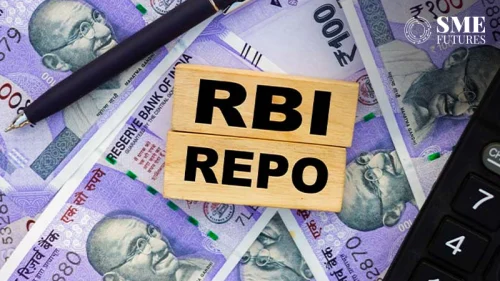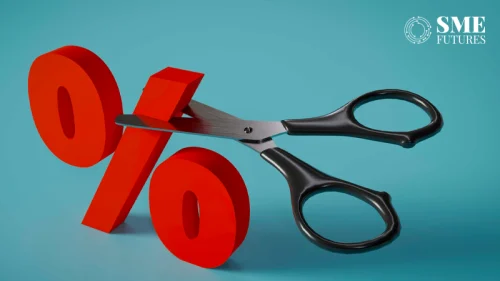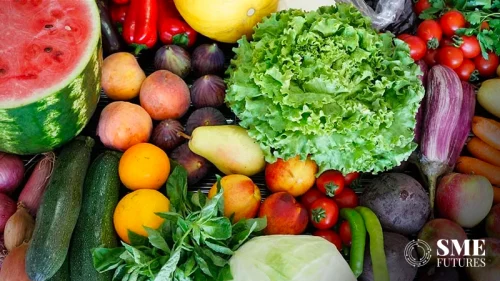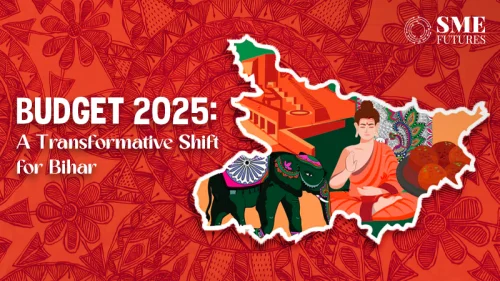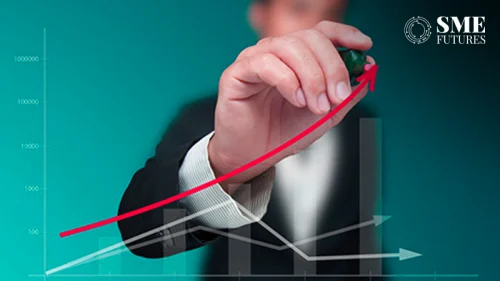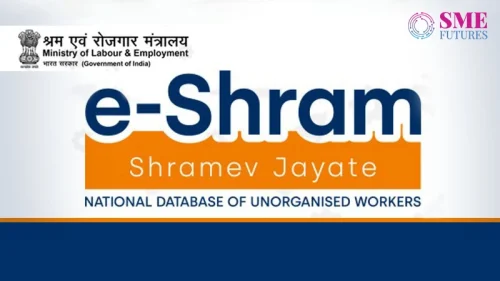It is a testing times for MSMEs of India. COVID-19 led operational constraints has casted a long shadow on already slowed economy of India. Factors such as social distancing, stringent lockdown measures, cut in discretionary spending, reduced labour strength etc are bringing SMEs of major sectors down. Owing to this downward trend, CRISIL has forecasted a steep fall in India’s GDP and contraction of 5 per cent in the fiscal 2021.
Along with this, non-agricultural GDP is estimated to contract by 6 per cent, while the traditional agriculture could cushion the blow by a steady growth of 2.5 per cent. The woes will further increase as India Inc heads towards revenue decline of around 15 per cent. For MSMEs the fall in revenue will be of around 17-21 per cent. A sharp decline at the operating level will also impact creditworthiness.
This will further aggravate the liquidity stretch that these units have been grappling with, particularly on the working capital front. Other than dealing with hurdles in managing capital, small businesses are also unable to amass loans and hence are witnessing massive demand deprivation. Therefore, the future prospects for already stressed MSME sector, amidst the ongoing challenges have worsened further. But, the ever-resilient Indian MSMEs are dealing with the crisis optimistically since their world thrives on hope.
Can MSMEs persevere as backbone of Indian economy?
Government of India on May 12 asked the nation to be self-reliant. Emphasising the vocal about local trend, Prime Minister Modi asked the country to maximise the usage of indigenous products. This step would not only ensure sustainability of Indian small businesses but will also cut down our import bills. In addition to this, government has also announced an economic stimulus package of Rs 20 lakh crore for reviving COVID afflicted small and medium firms.
Working remotely, MSMEs are considered backbone of the Indian economy employing more than 110 million people. Its contribution to GDP also is highest among all other sectors. These businesses account for 45 per cent of total industrial production and 40 per cent of total exports. The manufacturing segment within the MSME sector alone contributes 7.09 per cent to the nation’s GDP.
MSMEs also contribute to 30.50 per cent of services. The total contribution of MSMEs to our GDP is a whopping 37.54 per cent. Clearly, the dream of becoming 5 trillion dollar economy cannot be realised without strengthening the micro, small, and medium enterprises.
Rajan Sharma, Founder and CEO, Excess2sell.com a B2B platform opines, “As India targets the US$ 5 trillion economy, MSMEs will be leading from the front to contribute in achieving this target. This will not be limited to only industrial growth but to the human growth indices of our country. With dedicated industrial corridors being planned, the next few years will see only exponential growth for the MSME sector.”
On the same note, Vaibhav Saraf, Director, Aisshpra Gems and Jewels also agrees that MSMEs are going to play an important role in the vision of making India a 5-trillion dollar economy. He proclaims, “MSMEs are also going to realise self-sufficient India’s dream into reality. We can already see that the ‘Atmanirbhar’ movement has pushed a lot of entrepreneurs and small business owners to support the economy while making sure that maximum Indians are self-sufficient.”

Saraf then cites an example of his customer named Saurabh Agrawal. He is one of the numerous individuals who are supporting the economy through Atmnirbhar Bharat Abhiyan. Agrawal has been manufacturing personal protective equipments (PPE) suits and is selling them at a moderate price of Rs 97 from the day one of COVID-19 outbreak in India.
Resilience-The Key for Economic Growth
The varied pace of revival in worst-affected segments such as construction, auto-component manufacturers, auto-dealers, tourism, and travel have made rebound before fiscal 2022 not achievable. While some MSMEs remain optimistic about the upcoming festive season, FMCG distributors expect degrowth in this fiscal due to consumer down trading and supply-side challenges.
The bigger challenge still is decrease in demand, which needs an urgent revival for growth to improve sustainably. CRISIL in its research mentions that it is significant to push the demand curve upwards, especially in discretionary products and services.
A three-pronged strategy is necessary now states Amish Mehta, COO at CRISIL, “Firstly, improving the sentiment around job security for formal and informal workers to boost consumption is of utmost importance. Secondly, hastening the implementation of Rs 3 lakh crore Atmanirbhar scheme to ensure flow of liquidity to MSMEs should also be done.”
He further adds, “Lastly, lenders should go beyond traditional credit processes because they have to play a seminal role in the recovery of this sector of the economy. That will mean closer interactions with MSMEs to understand underlying drivers of business using innovations such as operational scorecards, digital platforms, and alternative data for monitoring and underwriting.”
Industry leaders and business owners are highly optimistic about MSMEs wading through this crisis and gaining their momentum again. Hardika Shah, Founder and CEO of Kinara Capital says, “Over just the last couple of years, MSMEs have survived GST and demonetization. Although COVID-19 is a larger threat, MSMEs are already diversifying their products to survive and grow their business. I can confidently say that there is no one more resilient than an Indian MSME entrepreneur!”
Kinara Capital caters to small firms by providing them no-collateral loans. Shah tells us that there are numerous stories of resilience. She further tells us that one of their consumers who once was machinery part manufacturer is now making commercial hand sanitizer and many in the textile business are churning out masks to meet the market demand. In addition to this, traditional MSMEs will have to adopt digital systems to efficiently run their business.
This means accessing digital payment systems, invoicing apps, and providing online lending solutions. Shah further suggests, “Entrepreneurs who can overcome the digital skill gap will see more opportunities coming to them. Boosting MSMEs has a direct and an immediate impact on boosting the local and national economy. In the years to come, a significant onus lies on government and public sector banks to support the MSME ecosystem by providing quick access to capital especially through MFIs and last-mile NBFCs.”

Resurrective Measures for Revival of MSMEs
There are about 63 million micro industries, 0.33 million small and about 5,000 medium enterprises in our country. These all play a crucial role to build a self-reliant India and most importantly these businesses are helping each other in becoming self-reliant. For instance, predictive logistics platform FarEye is helping small firms by equipping them with its delivery optimisation software.
FarEye served at zero cost at the time when supply chains were severely disrupted due to the pandemic. Kushal Nahata, Co-founder and CEO says, “In these trying times, we hope to empower and support this crucial sector so that they can maintain business continuity and improve process efficiency, which in turn would bridge last mile connectivity and enable the economy to get back on track.”
On the other hand, Sharma of Excess2Sell.com says that his company being an MSME itself is contributing in its own way to address and provide solutions for the woes of excess, unsold and ageing inventory. “Our online marketplace offers liquidation solutions to the B2B players in the MSME sector primarily in IT, computers, mobility, and telecom. We are therefore looking at expanding across new verticals like health and hygiene, LED lights, home and electric appliances among others,” he informs.

Startups are also coming up with innovative solutions to support economy. Crofarm, a farm-to -fork agritech startup has launched a platform Otipy. It is a social-commerce business model to connect consumers with farmers directly through resellers. This platform aims to build a scalable demand-led supply chain for fresh produce operating at 35 per cent gross margin mainly to help businesswomen to sell fresh produce to their community. This thereby helps them to earn Rs 20,000 to Rs 60,000 per month in the process.
Varun Khurana its Co-Founder and CEO said, “We are a technology-enabled gateway for businesswomen, end consumers, and farmers providing them access to fresh produce. We are targeting the large market with a broken supply chain but with a scalable demand-led model. We aim to bring fundamental change in the lives of our partner resellers which are generally women, consumers, and farmers at large.”
Can Schemes Save Businesses?
Government is continuously launching new schemes for reviving MSMEs in distress. Recently, ministry of MSME launched the Credit Guarantee Scheme for sub-ordinate debt (CGSSD) which is also called Distressed Assets Fund–Sub-ordinate Debt for MSMEs. In yet another development, government approved amendments in the Essential Commodities Act that allow farmers to sell their crop to anyone.
Commenting on agricultural schemes, founder of AgriBazaar, an e-mandi platform says, “The measure will improve the ease of doing business for agri-sector and will foster greater transparency, efficiency and trust across the value chain. Additionally, this will serve our goals of doubling farmers’ income by 2022 which will further boost Atmanirbhar Bharat Abhiyaan.”
Meanwhile, the Partial Credit Guarantee and Emergency Credit Line Guarantee schemes have gathered more interest from banks as compared to other liquidity related schemes rolled out earlier like third targeted long-term repo operation (TLTRO) for Rs 25,000 crore. On such government schemes for MSMEs, Hardika Shah opines that the rollouts of schemes have been staggeringly slow and not enough impetus has been provided to banks.

She claims, “MSMEs in distress particularly need additional government support in these unprecedented times. Along with these financing options, such enterprises also need some reduction or waiver such as reduction in electricity charges or provision of GST exemptions in the short-term until the economy begins to recover.”
More Support from Government Required
Shah tells that before the wrath of COVID-19, IFC had slashed India’s growth estimate to 4.8 per cent and now more time will be required by enterprises just for recovery in the post-pandemic era. She feels that government needs to device more measures than pushing local products, moratorium, or providing bank loans.
Shah further adds that government needs to do more to ease the burden of GST and liquidity pressure on the MSME sector that generates over 110 million jobs in India. Most small businesses lack the liquidity to survive months of disruption to their business.
“The real need of the hour is to figure out best ways for MSMEs to stay afloat and wade through the crisis with minimum impact. Moratorium as a solution is not enough. A one-time restructuring can apportion the increase in costs based on the individual borrower’s capacity to come back to normalcy. Whereas, extending the moratorium simply increases the burden on MSMEs in the long run,” adds Shah.
Future of MSMEs in Post-COVID Era
MSMEs are struggling. The economic upheaval caused by COVID-19 pandemic will take time to recover because all supply chains were disrupted due to an unprecedented lockdown. Not all cities are out of the containment zones yet even after three months of lockdown and the coronavirus cases continue to spike in various parts of our country.
The business owners are ready to resume their operations, but they are unable to become functional in their full capacity. As per the CRISIL research, the challenges would be the hardest for micro enterprises. These account for 32 per cent of the overall MSME debt and are facing material stress in terms of revenue growth, Ebitda margins, and working capital stretch.

MSMEs that will be able to swim against the tide will gain longevity in post-COVID era. Saraf of Aisshpra Gems asserts, “Considering that we have been in complete lockdown for more than one quarter and crisis still continues in many part of the country, it is too soon to predict how MSMEs will perform in next two to five years.”
In addition to this, businesses which can diversify their product offerings for different sectors will have better chances of survival and growth in these testing times. A strong support from government with focus on infrastructure creation will also lead to import minimisation and maximisation of exports. This will thereafter create an appropriate environment for robust MSMEs growth along with development of a perfect Make in India ecosystem in our country.


